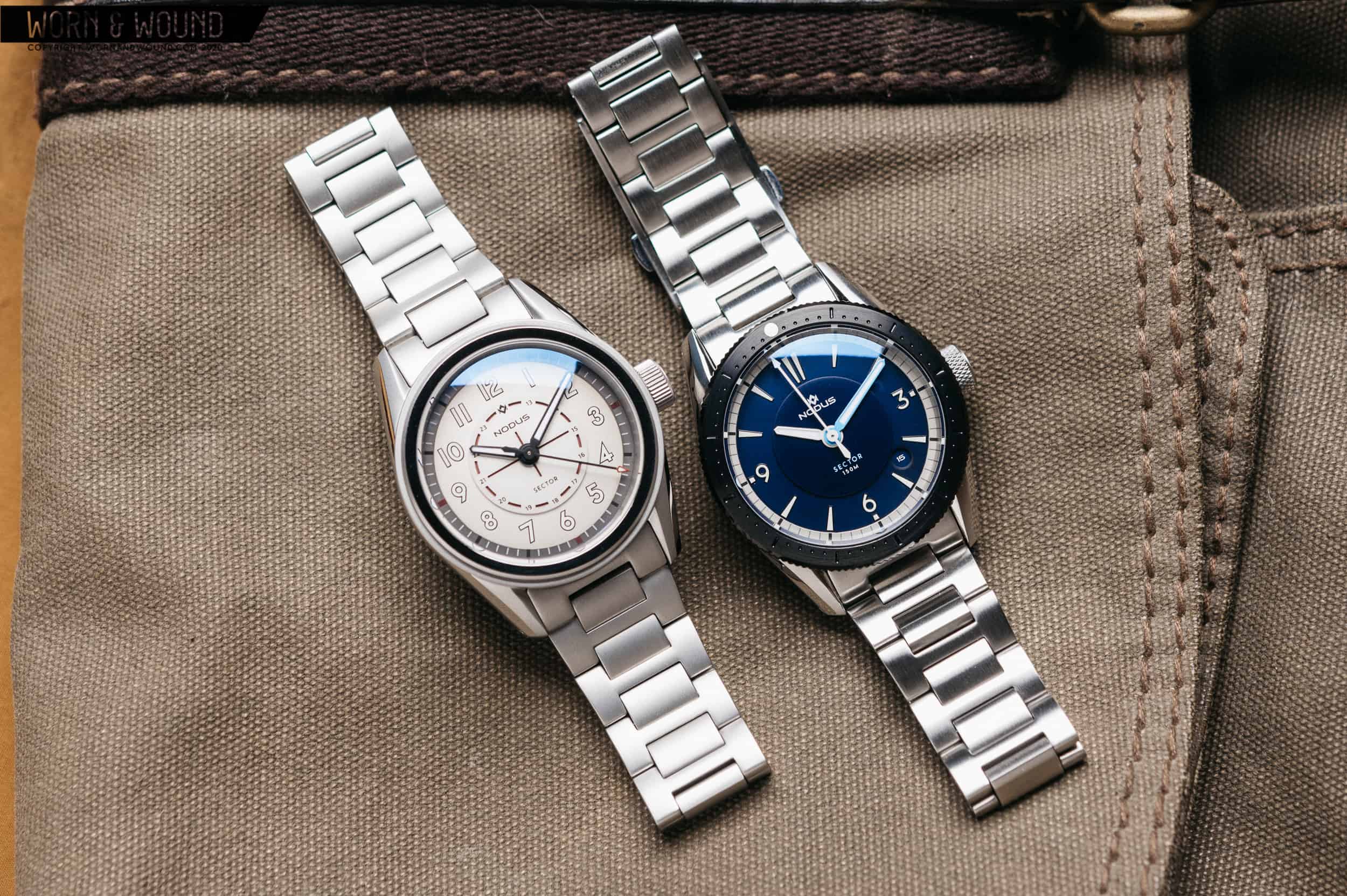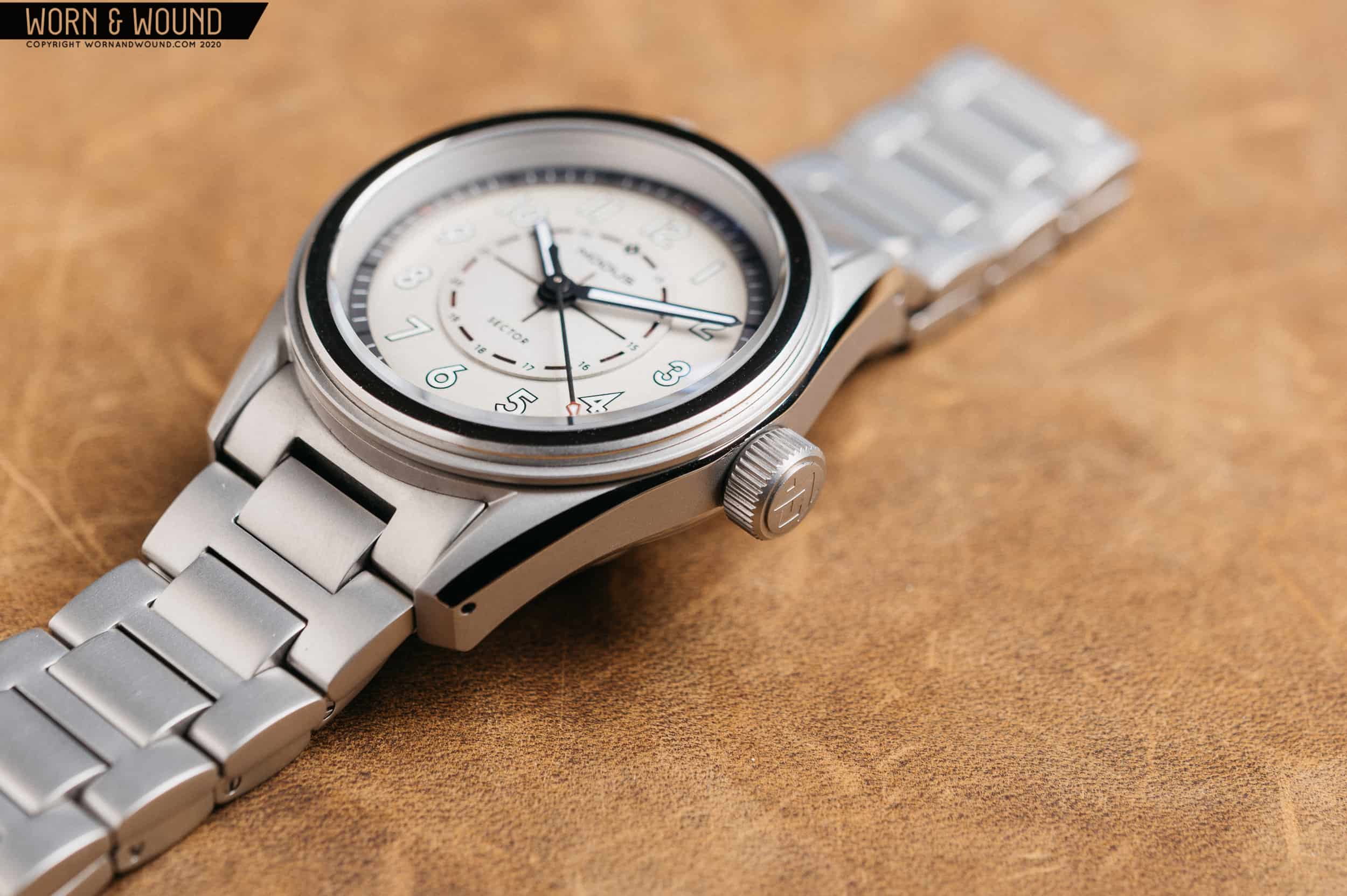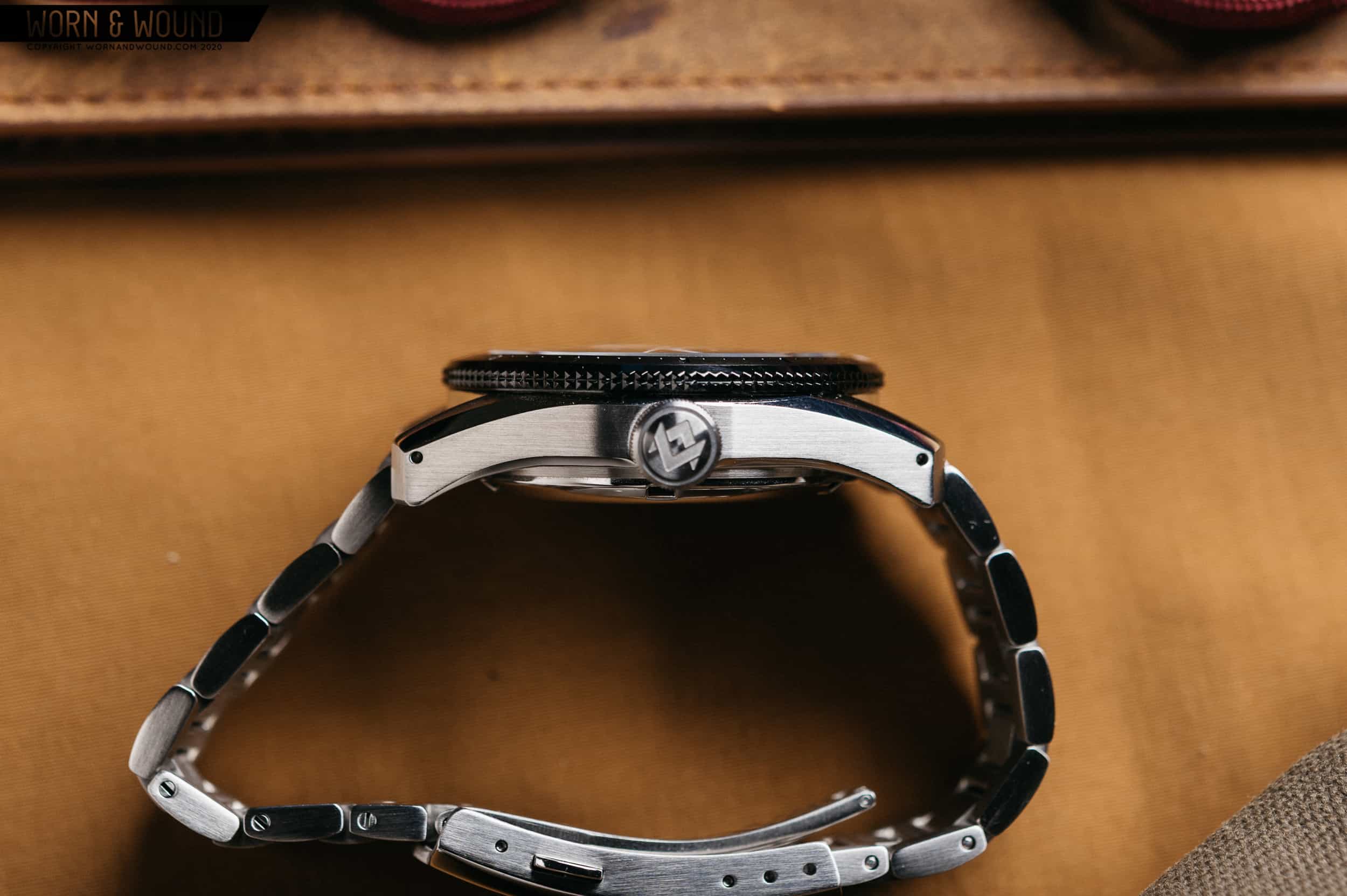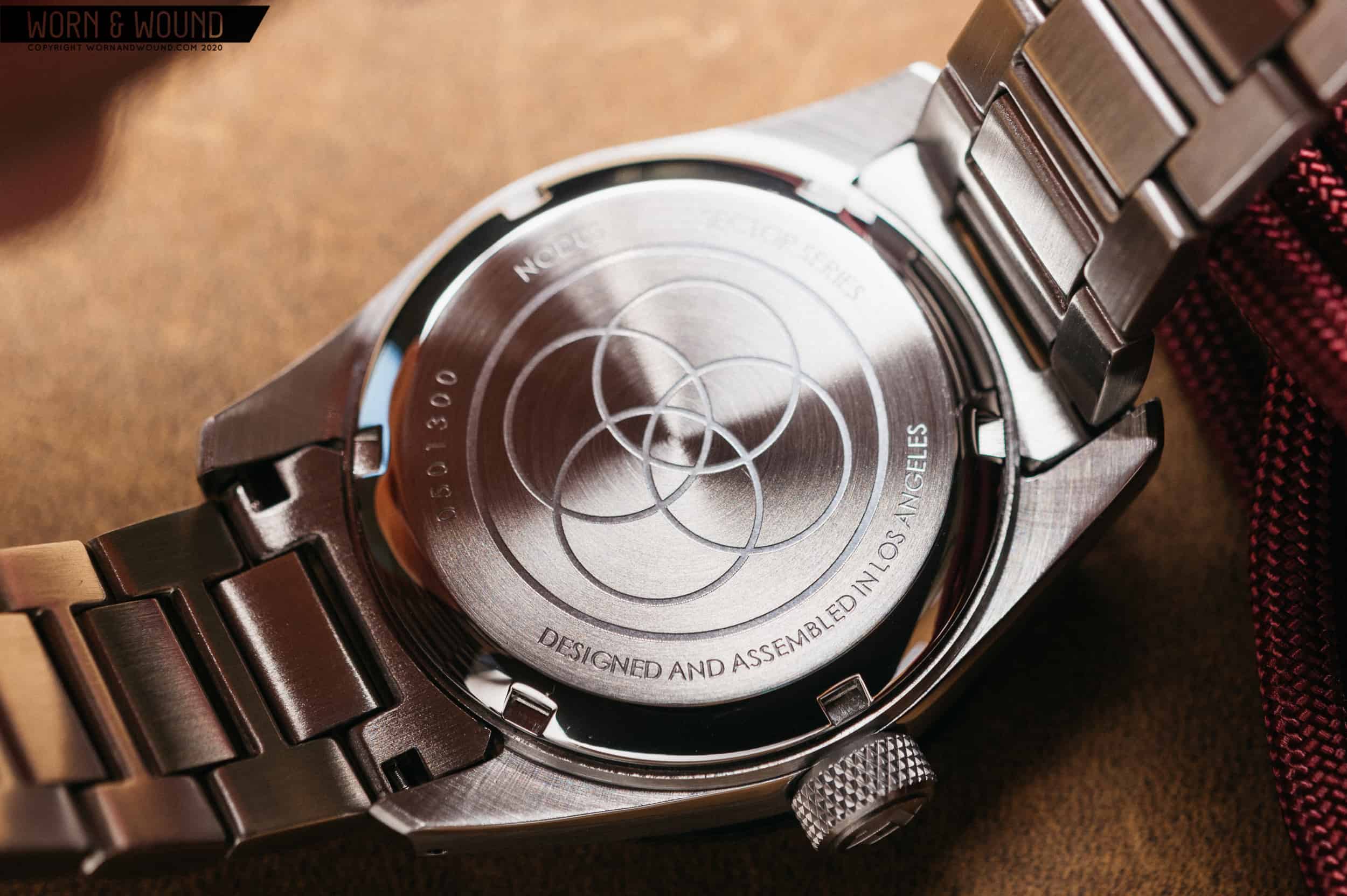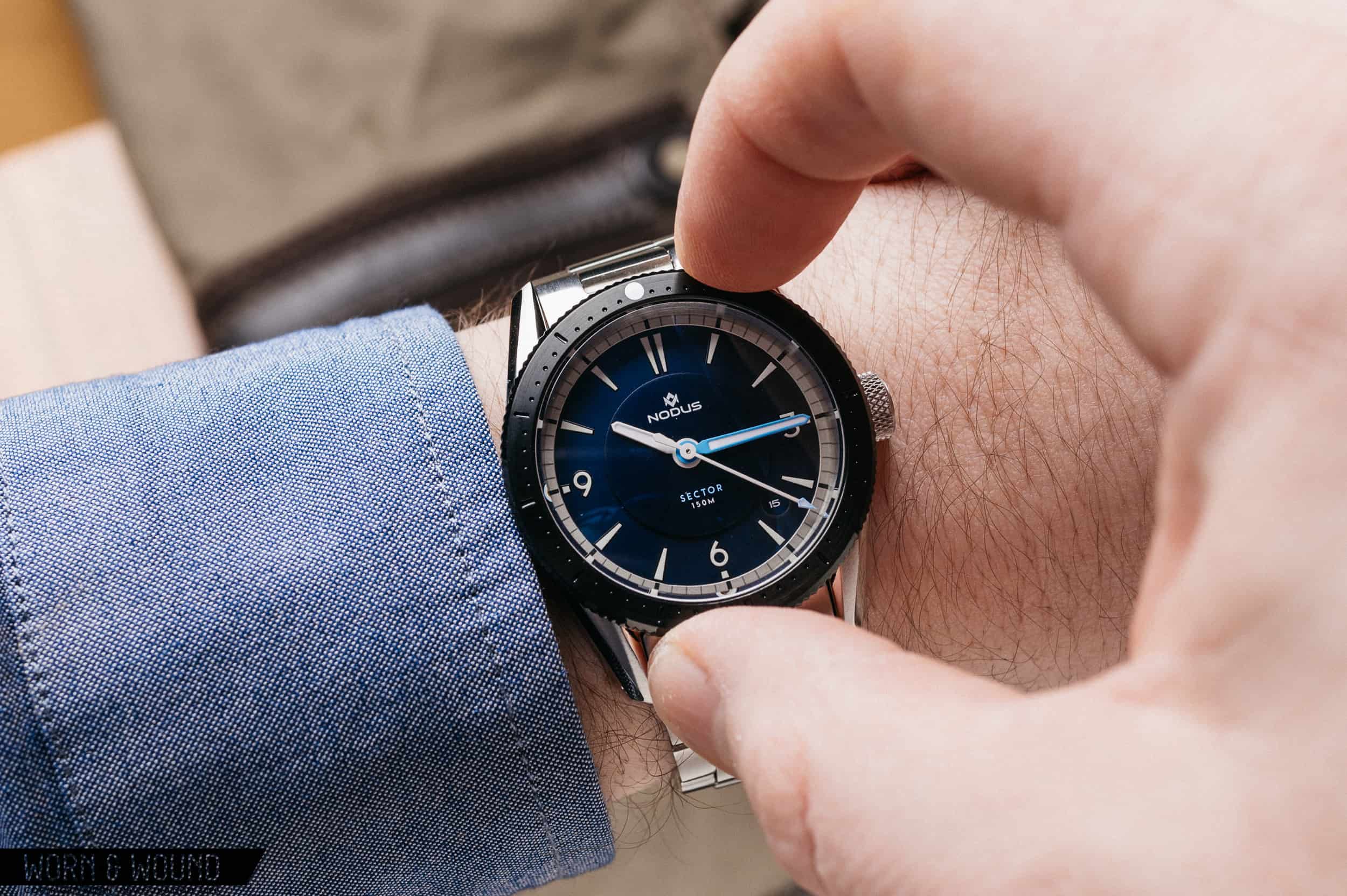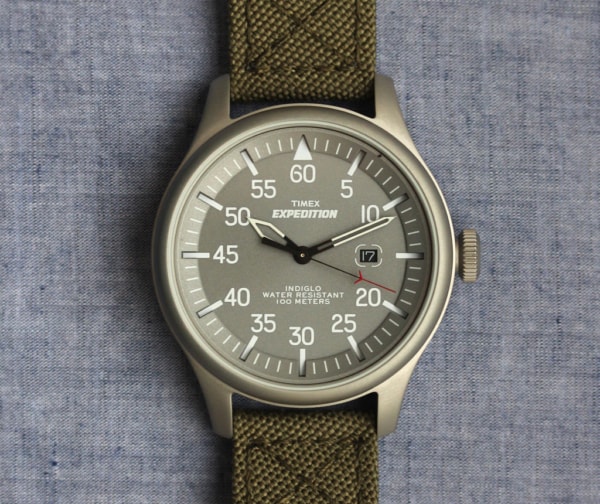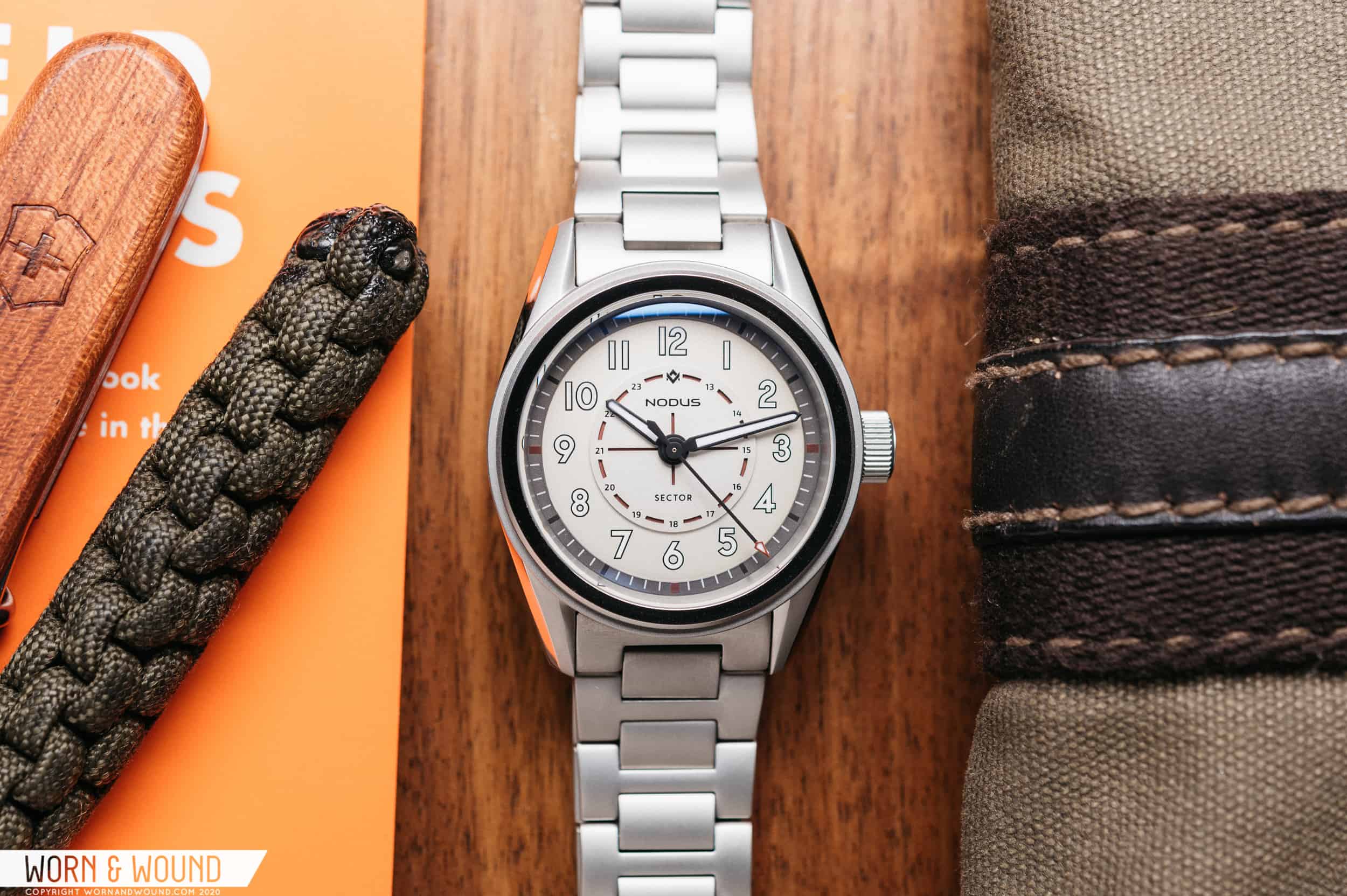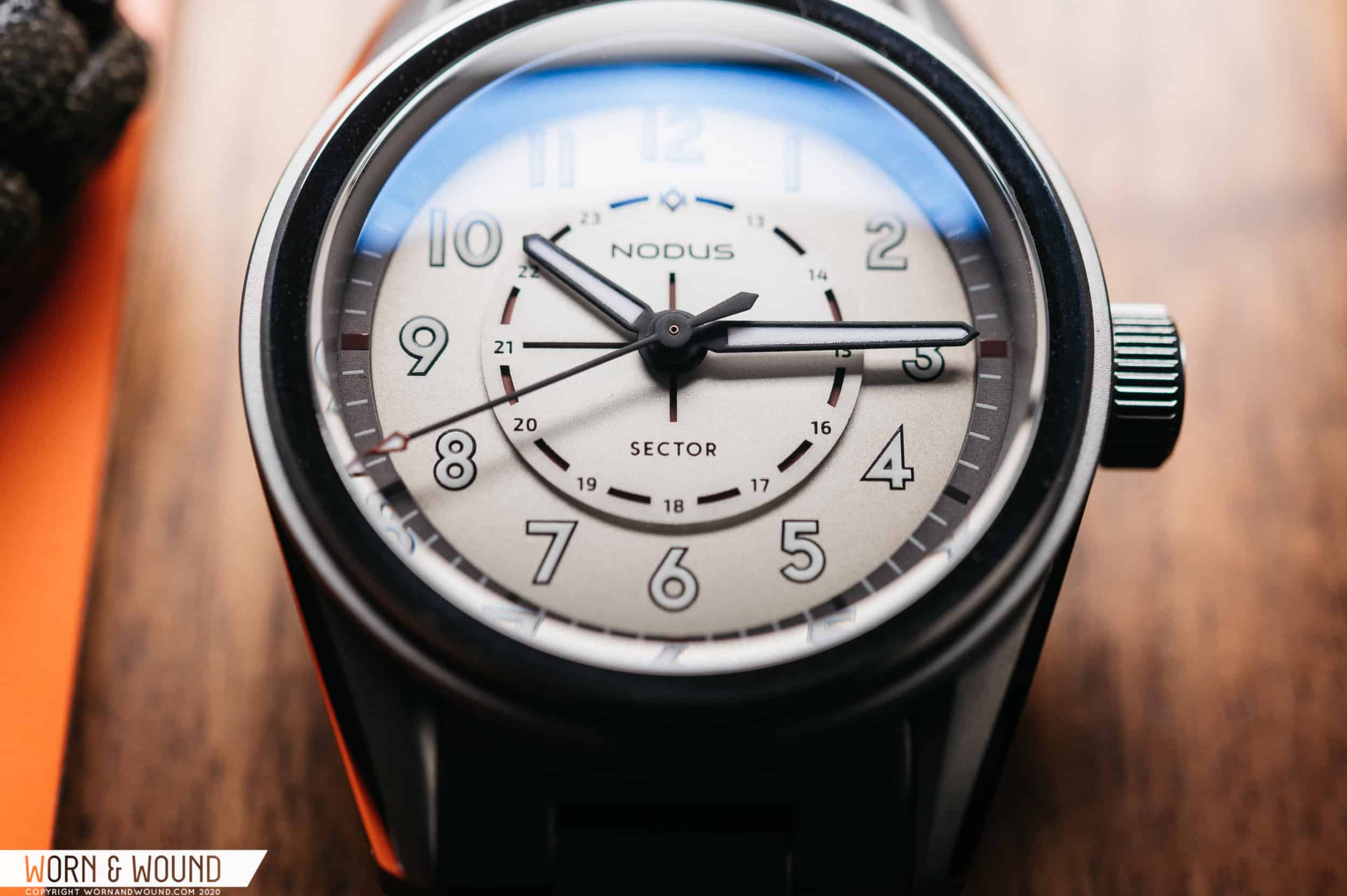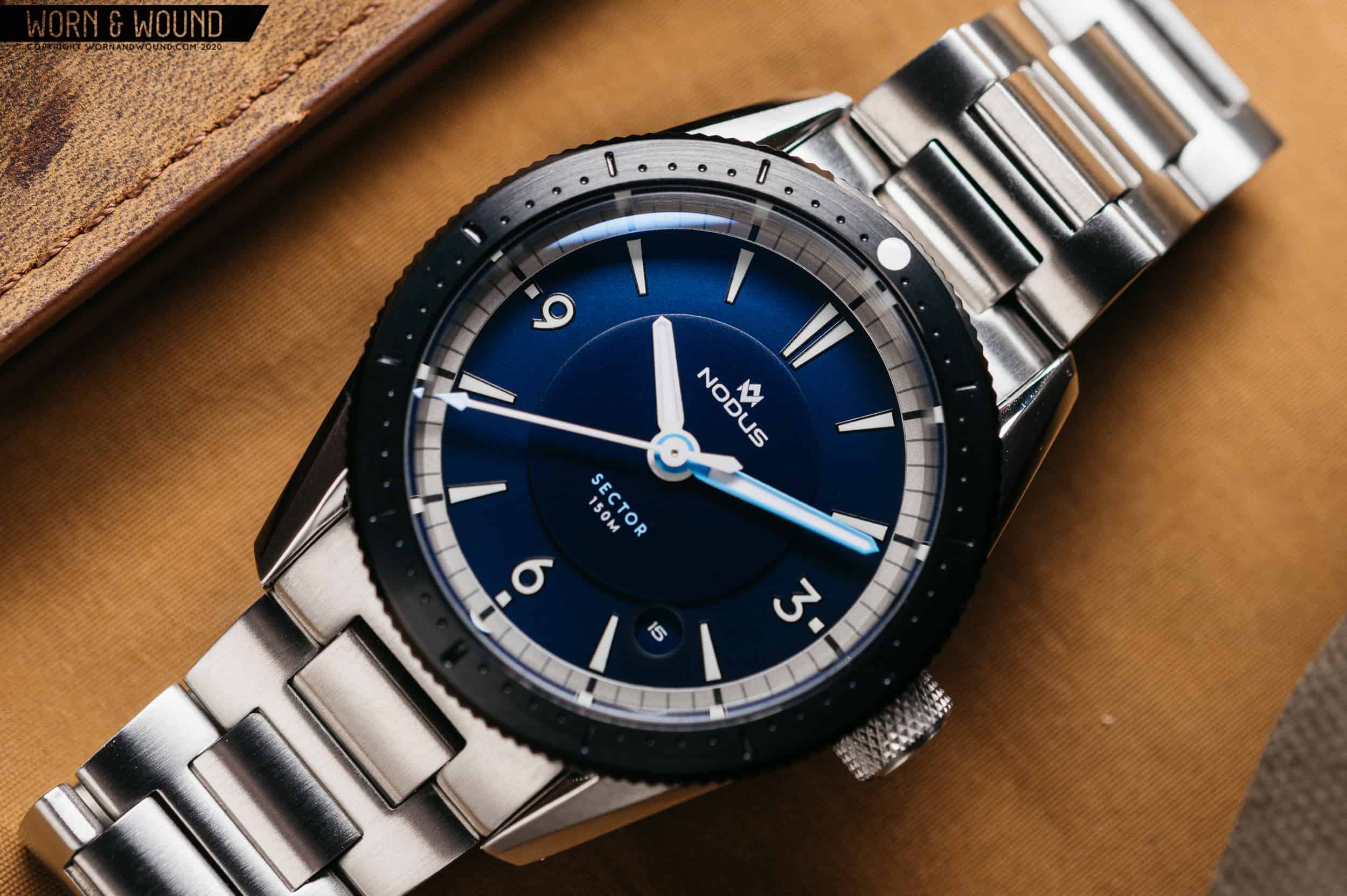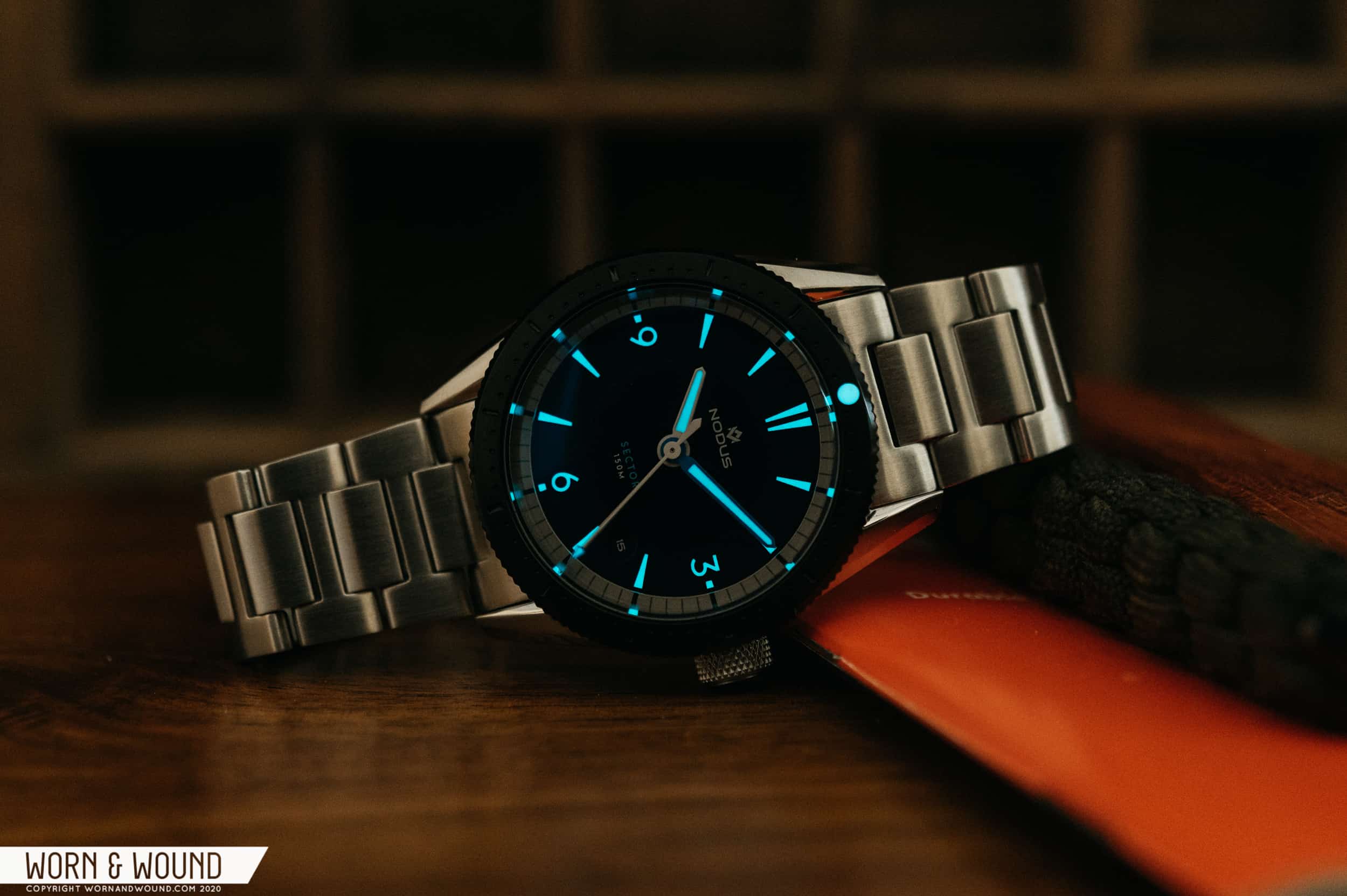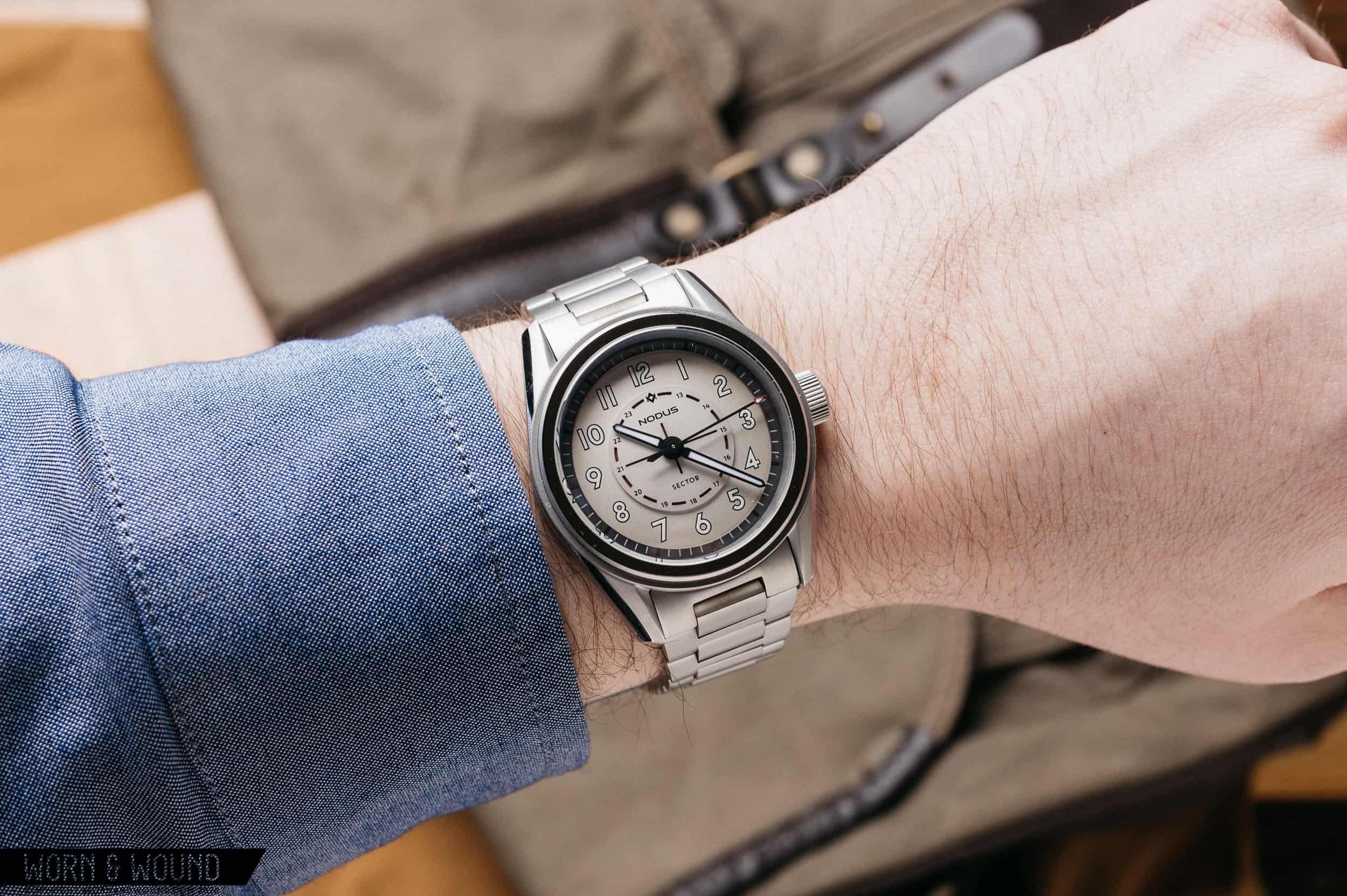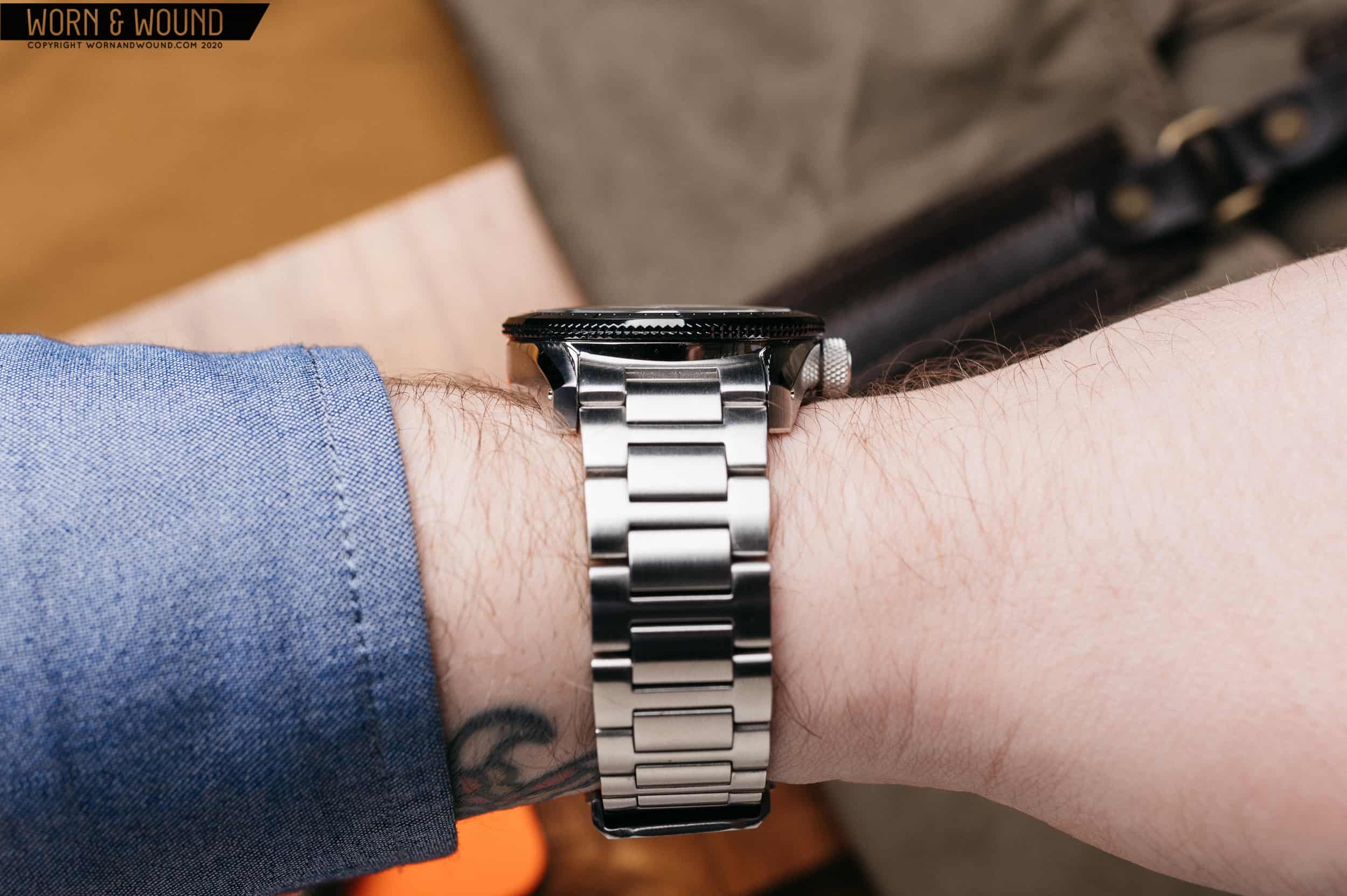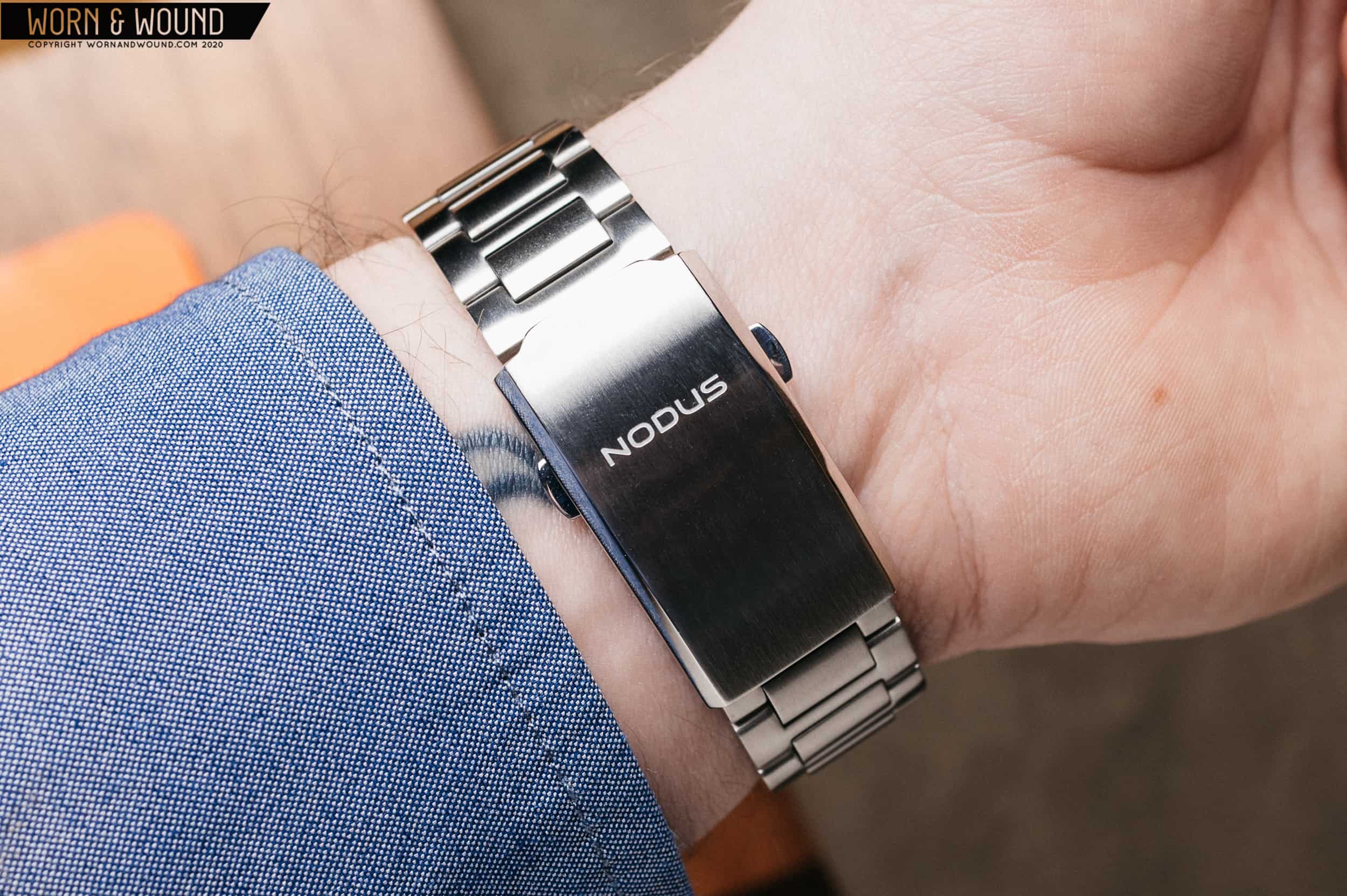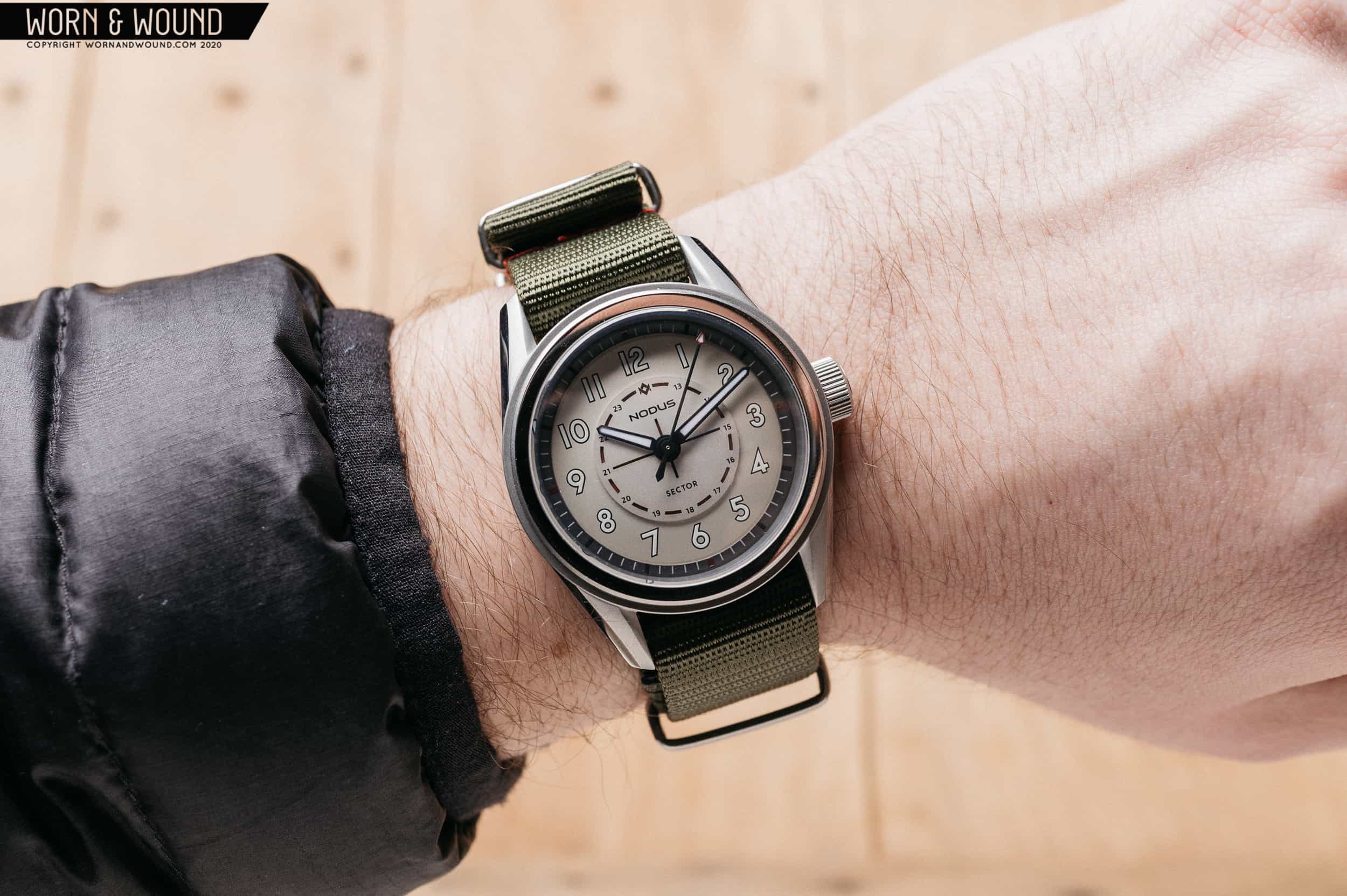Nodus is a two-person brand operating out of Los Angeles, California, and though the company is quite young, it has deservedly built up a lot of buzz and quite the loyal following (Nodus is also no stranger to Worn & Wound — check out our past coverage here). Today, we’re going hands-on with their most ambitious watches to date — their newest Sector collection. Generally speaking, the Sector is loosely inspired by sector-dialed watches, hence the name. But the overall execution is very different: it’s modern, almost playful, and decidedly sporty.
There are two primary variants within the Sector range — Field and Dive. The naming conventions are pretty apt: the Field is modeled after classic field watches, and the Dive pulls from ‘60s-era skin divers.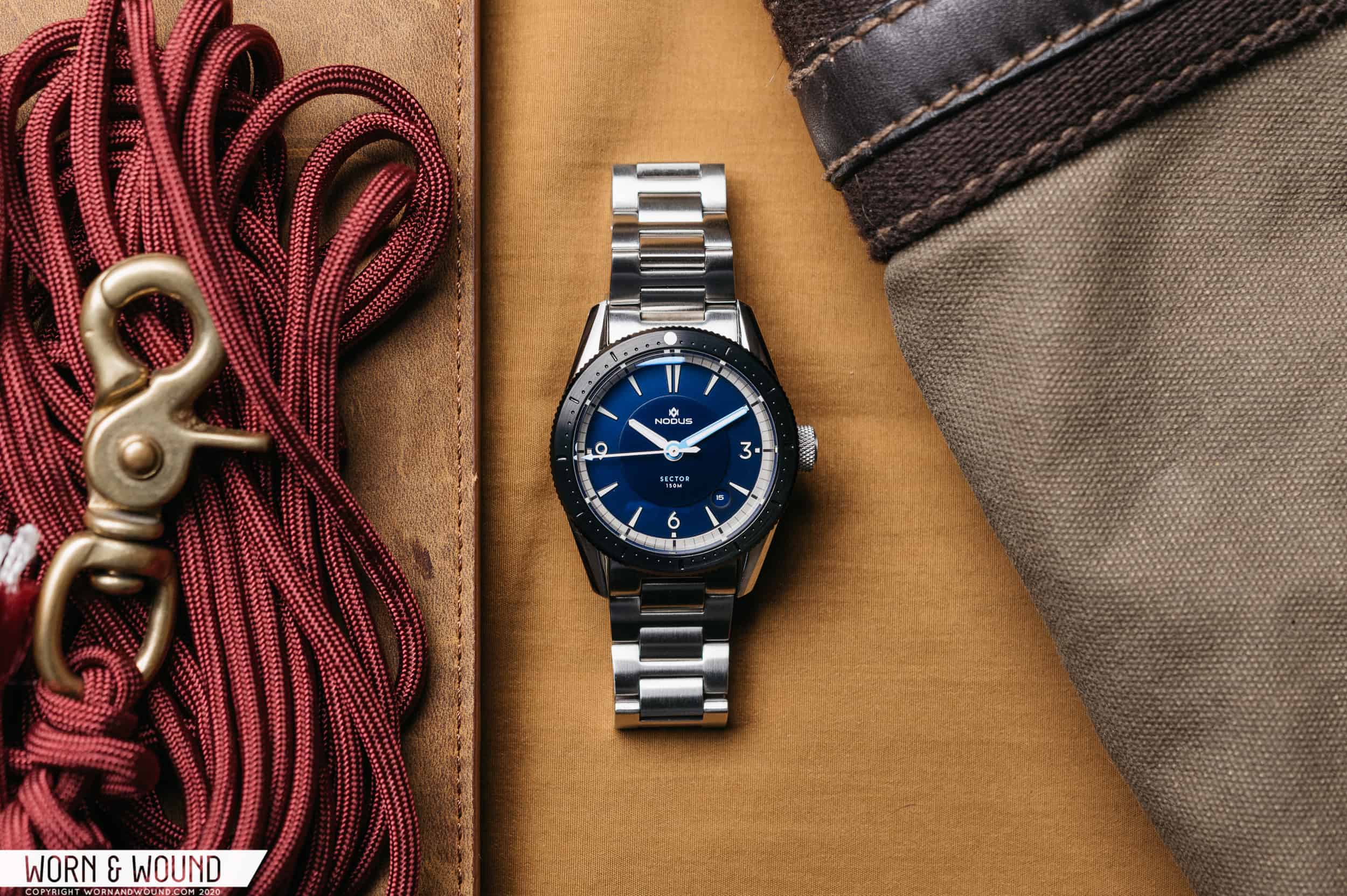
Nodus co-founders Wes and Cullen are tried-and-true watch nerds, and they approach their brand through that lens. They go the extra mile by assembling each piece in-house to their exacting standards, which includes regulating each movement to ensure better timekeeping. An impressive feat, especially given the ~$400 price point.
As I wrote above, the collection features a number of different variants, but to keep things a little simpler we’re going to look at one model from the Dive category and one from the Field. The two we have here are the Dive Tidal with its blue dial and the Field Vapor with its cream dial. Let’s jump right in.









 Featured Videos
Featured Videos




